The Rapidan Dam has been a local landmark since 1910. Learn more about the history of the area and links to current conditions.
Information compiled through the Blue Earth County Historical Society Archives. Please credit the Blue Earth County Historical Society when using this information.
Listen to our “Surrounded By History” podcast recorded with Radio Mankato about the Rapidan Dam and its history
The History of Rapidan Mills, Rapidan and the Rapidan Dam
The Blue Earth River runs through Blue Earth County (the river’s namesake), southern Minnesota and Northern Iowa. The river (and county) was named for former deposits of blue-green clay, no longer visible, along the banks of the river. The river is 108 miles long and joins the Minnesota River at the bend in Mankato – the confluence of the two rivers is near Sibley Park.
In 1864 plans for commercial use of the Blue Earth River rapids for power began to take shape. Silas Kenworthy opened a water-powered flour mill along the western banks of the Blue Earth River at the lower rapids in 1866. The small village Rapidan Mills comprised of homes and small businesses for the people working at the mill soon developed.
A 230-foot-long iron bridge set on stone pilings was constructed over the Blue Earth River at Rapidan Mills in 1878 connecting trade and commerce for miles around.
Over time, mills and mill operators changed. In 1890, a new larger water-powered flour mill with a linseed oil mill and elevator was built in this location. However, success was short-lived as spring ice damaged the new dam in 1891 and shortly after a fire destroyed the mill. In 1899 a large three-story modern flour mill was built over the old mill’s foundation. This is the first time commercially manufactured and distributed flour was made in this location.
This mill operated until the land was sold to the Consumer’s Power Company for the construction of a new electricity-generating plant at this location. The mill was razed, buildings, homes, and the iron bridge in Rapidan Mills were torn down or moved, and the surrounding timber was cut and moved. Rapidan Mills was no more, but what was to come is a Blue Earth County landmark.
Although gas-powered lighting was available in Mankato beginning in 1885, the new form of electrical generation was making its way to the area.
No one appeared alarmed when the Free Press announced on February 24, 1910, that the Mankato power company had been sold to a corporation of Chicago capitalists which already owned electrical generating plants in Stillwater, Red Wing, and Faribault under the name of the Consumers Power Company. At the same time, the company was completing the purchase of land along the Blue Earth River near Rapidan Mills for the site of a major power-generating dam.
The surveying of the reservoir site had been going on for a year with the help of the county surveyor; the land purchases in the area might have begun as early as 1907. Land purchases and promises of jobs for 200 men made the project very enticing.
The Ambursen Hydraulic Construction company, an established dam builder, got construction underway almost immediately. The old flour mill buildings at the dam site were moved to the top of the west bluff and converted into bunkhouses and dining halls. A classified ad in the Free Press called for 150 men and 35 teams of horses to work on the project. Eighty-eight men reported to work on March 17, 1910.
The winter was rather mild, and the work progressed without a hitch. The poured-concrete dam and powerhouse are founded on friable sandstone bedrock in the steep u-shaped valley. The overall length of the dam is approximately 475 feet and the maximum height is approximately 90 feet. The reservoir upstream of the dam (formerly the village of Rapidan Mills) provides storage for power generation, recreation and conservation value.
The dam and powerhouse were completed by early 1911, and their electricity from the dam’s two 750 kilowatt General Electric generators flowed into Mankato on March 11, 1911 – one year after construction began. The output of the turbines at the dam more than doubled Mankato’s steam-powered plant capacity. However, there was no big celebration, no ceremonial switch-throwing when the power first made its way along the line to the substation on Elm Street.
At this time, electricity was only used for lighting and not in every home. So, the power company was soon stringing lines to sell the power from Rapidan Dam throughout the area. In 1912 lines were strung to Lake Crystal and Kasota, followed by twelve additional communities by 1915.
The dam gradually became obsolete. The huge growth in the use of electricity after World War I and the coming of rural electrification in the 1930s, soon outstripped the 1,500 kilowatts of capacity at Rapidan. When the Wilmarth generating plant opened on the north edge of Mankato in 1948 it had a capacity of 25,000 kilowatts (which is tiny in comparison to today’s electrical plants and grids).
The hydroelectric plant at Rapidan delivered power to Mankato until the spring flood of 1965, when ice hit the dam with full force and a phenomenal peak discharge of 43,100 cubic feet of water per second. The dam was damaged and the powerhouse was flooded making the hydroelectric plant inoperable.
In 1980, after the Windfall Tax Act and the Public Utilities Regulatory Policies Act of 1978 were passed, the hydroelectric market was revived, and Rapidan Dam was one of the first hydroelectric facilities to be renovated with public and private sector cooperation. The dam once again began producing hydroelectric power in 1984.
In 2002, extensive undermining of the dam’s foundation was discovered, and emergency repairs were required to prevent a dam failure. Additional apron, foundation, and abutment repairs have been conducted since 2002. In the early 2020s, the Rapidan power station produces approximately 23 million kilowatt-hours of clean energy in a typical year.
Of course, when you think of the Rapidan Dam, you instantly think of … The Rapidan Dam Store. The Dam Store has become a staple in Blue Earth County. But did you know that this little store and café dates back to 1910?
The building, which originally stood in the village of Rapidan Mills, was moved to its current location and opened as a store in 1910 by George Nelson (1910-1937). Nelson catered to the men who worked on the construction of the dam, and he picked up business from those who traveled to the Blue Earth River to fish from its waters.
Several people have operated the store between Nelson and the current owners Jenny Barnes and David Hruska. Their parents Jim and Linda Hruska purchased the store and dam keeper’s house from the Sween family in 1972.
The Dam Store is not only a local landmark for their hamburgers, fries, and old-fashioned shakes, but is especially known for the Dam Store Pie. The tradition began in 1985 when Rapidan resident Erna Lange began making pies for the café. In 2002, she passed the wooden rolling pin and secret recipes to Jenny Barnes who still makes them fresh every day dependent upon what fruit is in season.
For current images of the flood damage to the area, follow Aerial Imagery Media, AW Aerial, Blue Earth County/Mankato Area Scanner and Severe Weather Updates, or KEYC News Now on Facebook. These are all public pages.
A GoFundMe has been established for the Hruska Family. Learn more here.
To learn more about the construction of the Rapidan Dam, you can purchase our book Rapidan Dam: The Construction of a Landmark.
For a quick overview of the Dam’s History, watch our History In A Minute: Rapidan Dam.
Information compiled through the Blue Earth County Historical Society Archives. Please credit the Blue Earth County Historical Society when using this information. For media outlets looking for more images or information, please contact us at 507-345-5566 or email Shelley@BlueEarthCountyHistory.com.


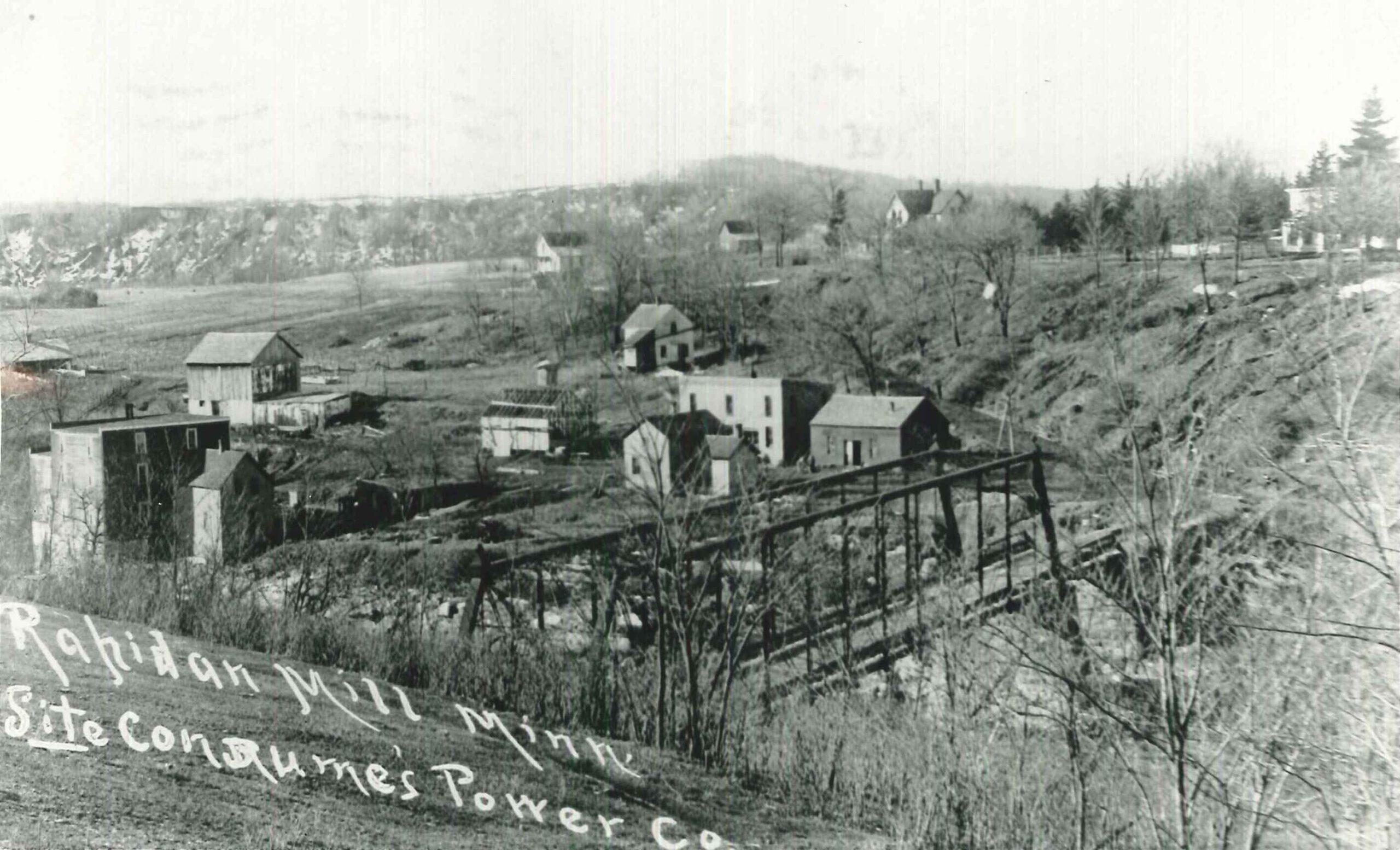
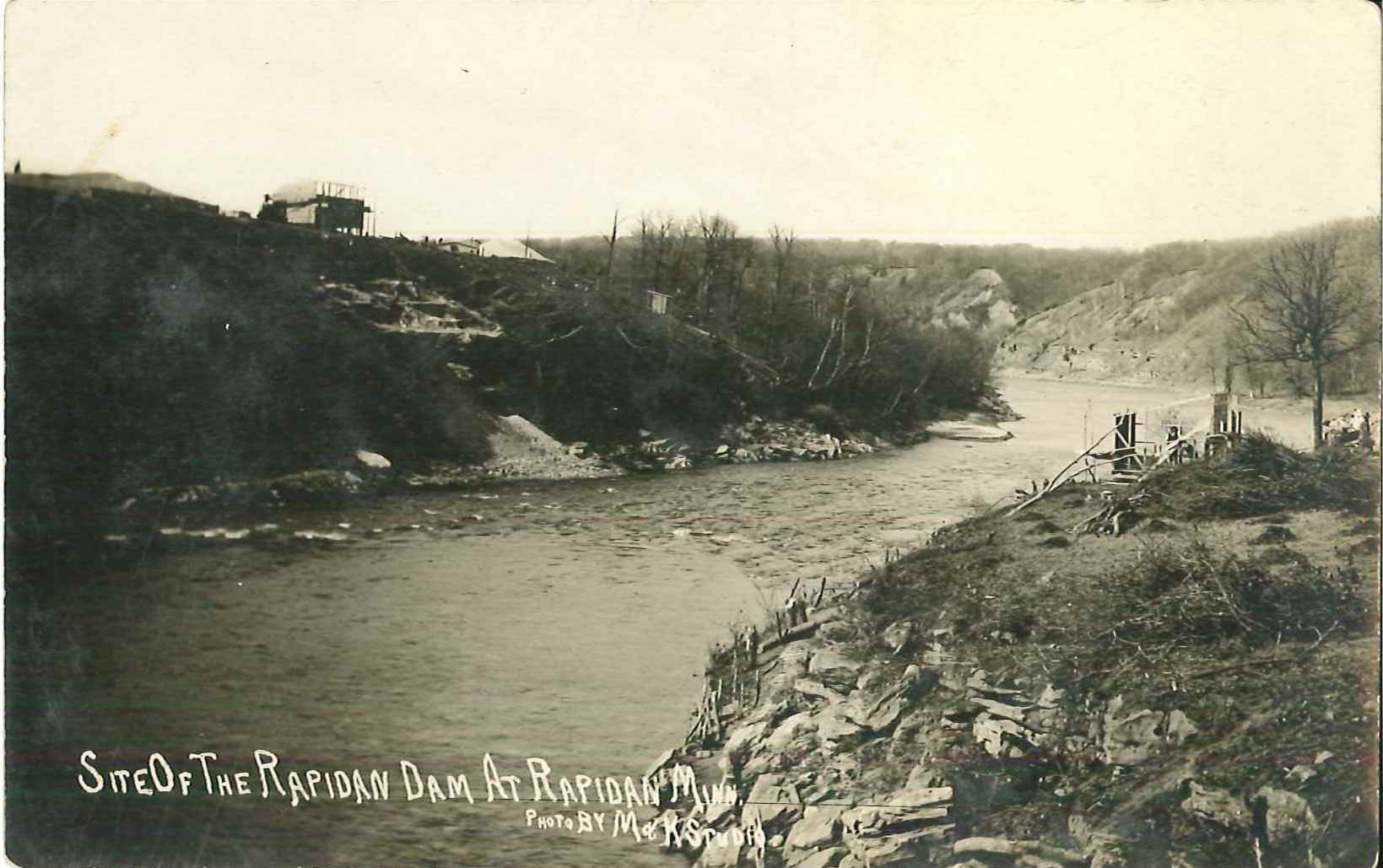
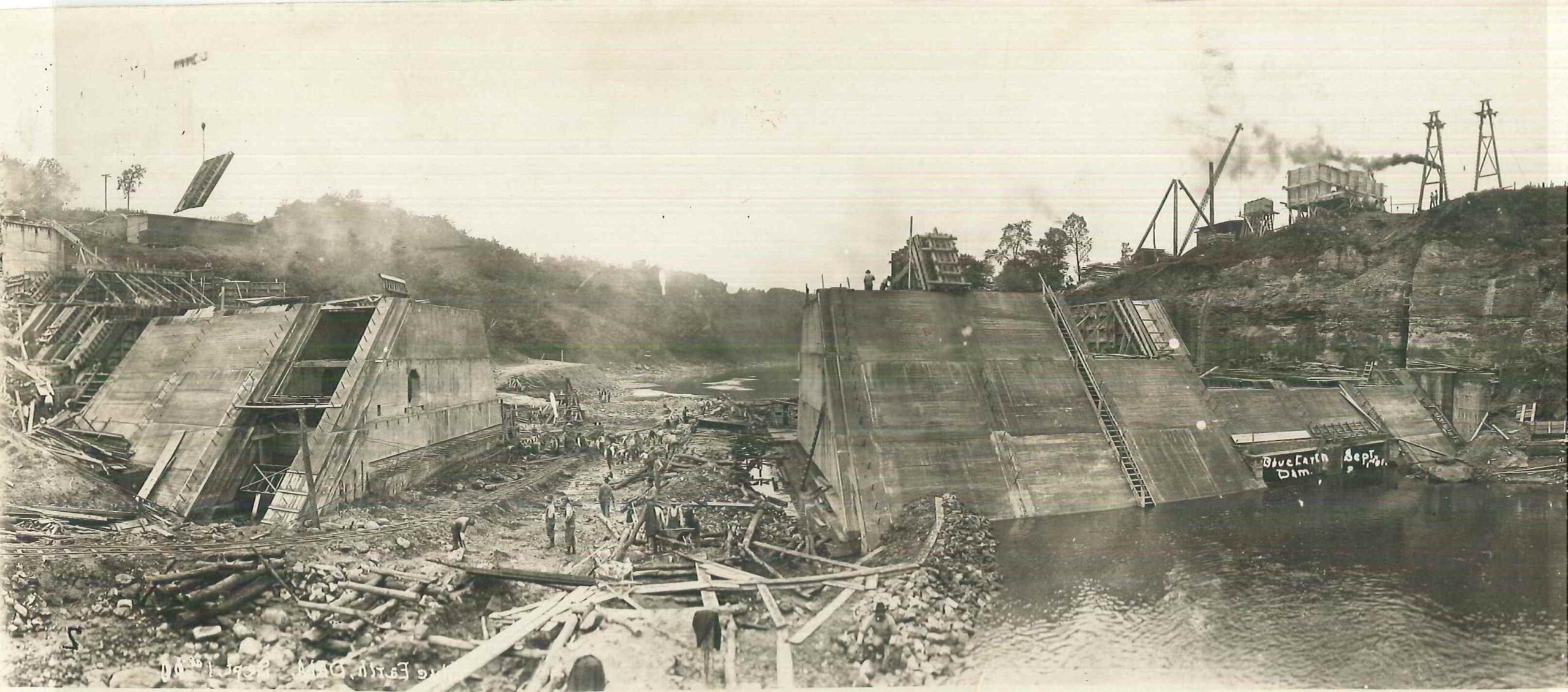
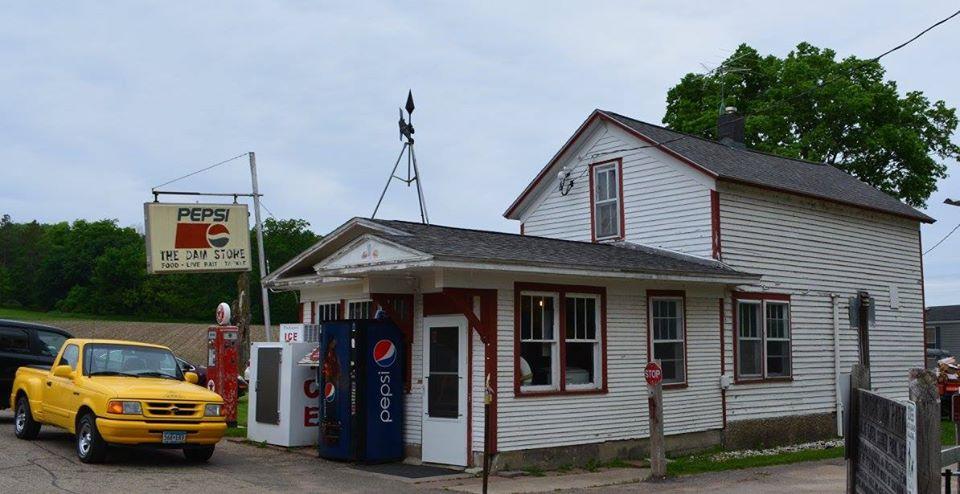
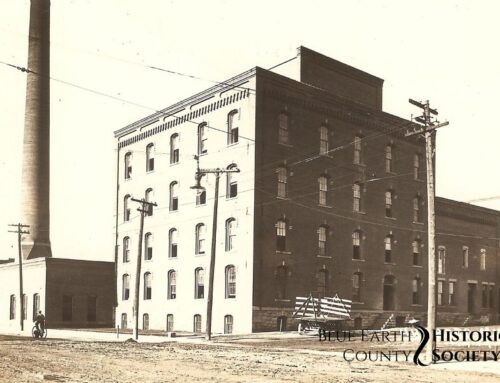
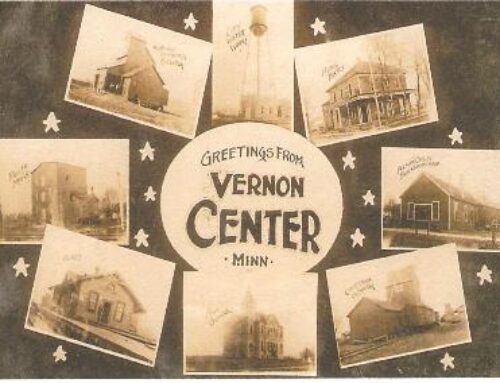
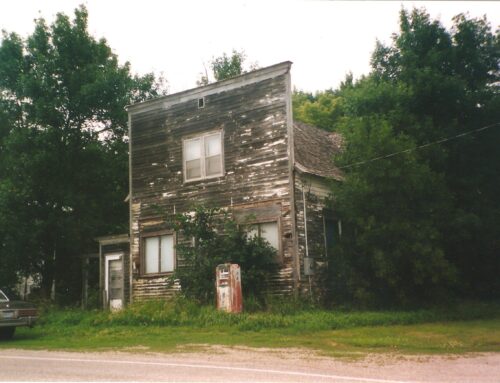
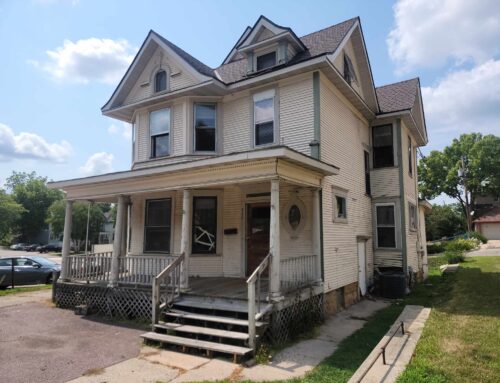
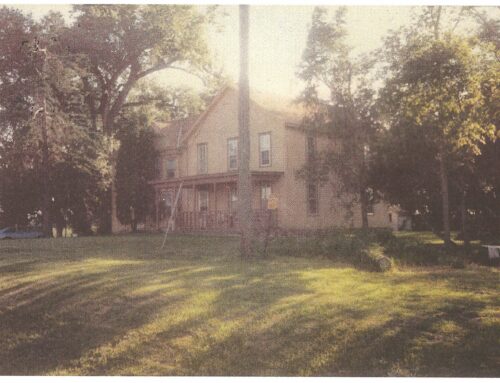
Of course I can’t remember the title of the book that I read, but it was about electricity in the United States being an unregulated commodity until about the 1930s, when Franklin D. Roosevelt got the federal government to build dams and legislation to control prices. Naturally the group of Chicago investors was looking to profit by constructing a dam in rural MN… Electricity, regardless of what Homer and Roy claimed in the infamous NSP ads, was not penny cheap in many areas of the country and the dude in Chicago was one of the biggest profiteers in the market.